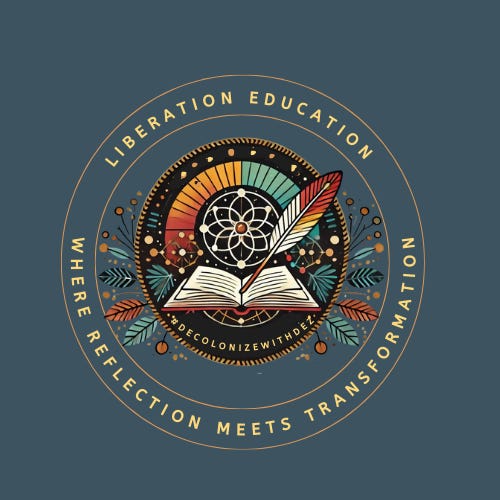Day 4: Understanding the 15 Pillars of Supremacy Culture
Today’s session felt like a powerful step forward in our journey of liberation. Together, we explored Understanding the 15 Pillars of Supremacy Culture, which serve as a framework for identifying the systems that perpetuate harm and control in our lives and communities.
Supremacy culture doesn’t just happen—it’s upheld by tools like perfectionism, fear of conflict, and power hoarding that infiltrate relationships, workplaces, and even our self-perceptions. But here’s the good news: when we learn to name and address these pillars, we begin to reclaim the agency and connection needed to build something better.
This work is about much more than awareness—it’s about transformation. And it’s about imagining new ways of being, rooted in care, justice, and accountability.
Key Takeaways
The 15 Pillars of Supremacy Culture Reveal How Oppression Operates
These pillars (e.g., perfectionism, power hoarding, fear of conflict) are systemic tools of control. Recognizing their presence in your life is the first step to disrupting their power.Supremacy Culture Impacts Everyone Differently, but No One Escapes Its Harm
While Black, Indigenous, and marginalized bodies bear the brunt of these systems, those upholding them are also dehumanized and disconnected. Solidarity begins with acknowledging this shared harm and moving toward collective liberation.Awareness + Action = Transformation
Naming the 15 pillars is only the beginning. True transformation comes when we take intentional, actionable steps to disrupt these dynamics in our relationships, communities, and systems.
Highlights from Our Conversation
Understanding Supremacy Culture’s 15 Pillars
We grounded our session in the 15 Pillars of Supremacy Culture. These aren’t personal failings—they’re structural systems designed to maintain control. For example:
Perfectionism keeps us afraid to act for fear of being wrong.
Fear of conflict discourages us from having hard but necessary conversations.
Power hoarding prevents collaboration and equitable decision-making.
Recognizing these pillars allows us to move beyond shame and blame, focusing instead on systemic transformation.
Healthy Conflict and Relationship Repair
One of the most difficult but essential shifts we discussed is the need for healthy conflict. Supremacy culture thrives on disconnection, teaching us to avoid or mishandle disagreements. But conflict, when approached with care and accountability, is an opportunity to deepen trust and connection.
We explored what it means to repair relationships after harm has occurred and how this process is often absent in spaces dominated by supremacy culture. I shared personal stories, including moments of estrangement and reconciliation within my own family, to illustrate the importance of staying present—even when it’s messy.
Tools for Growth: Dr. Sundiata’s Resources
For those looking to deepen their practice of healthy conflict and dialogue, I highly recommend exploring Dr. Sundiata’s Authentic Dialogue Resources from Grow Dialogue. These tools provide actionable strategies for fostering connection, empathy, and transformative conversations. You can find them here: Grow Dialogue’s Authentic Dialogue Resources.
Embracing Imperfection
We also discussed the harm caused by perfectionism, one of supremacy culture’s most pervasive pillars. I reminded everyone that showing up imperfectly is still showing up. Liberation work is not about “getting it right”—it’s about staying committed.
Reflection Points
Which of the 15 pillars of supremacy culture do you notice most in your life or community? How do they show up, and what impact do they have?
What is your relationship to conflict? How can you reframe conflict as an opportunity for growth and connection?
What steps can you take to actively disrupt supremacy culture in your daily life?
Journal Prompts
Reflect on a time when perfectionism or fear of conflict held you back. What would you do differently now?
Write about how patriarchy or power hoarding has shaped your relationships or community. What patterns do you want to change?
Envision a world where healthy conflict and relationship repair are the norm. What would it look like to live in that space?
Actionable Steps
Download the Ebook and Infographic: To deepen your understanding, grab your free infographic and my ebook, Dismantling Supremacy Culture: Understanding and Overcoming Its 15 Pillars. Access them here.
Practice Naming the Pillars: Start noticing where these dynamics show up in your personal, professional, or community spaces. Awareness is the first step.
Explore Dialogue Resources: Visit Grow Dialogue’s Authentic Dialogue Resources for tools to foster connection and repair in your relationships.
Looking Ahead: Day 5 Preview
Tomorrow, we’ll explore Recognizing Internalized Oppression in Ourselves. This session will focus on how supremacy culture conditions us to oppress both ourselves and others—and how we can start to unlearn these behaviors to move toward liberation.
Reminder
The first 10 days of 100 Days of Community are free, but access will transition to paid subscribers after that. Right now, you can get 20% off the annual subscription ($80).
I also believe in equitable access. If financial barriers exist, please email scholarships@desireebstephens.com for a comped subscription.
Liberation work is not easy, but it’s necessary. Together, we’re imagining and building systems that honor care, accountability, and connection. Thank you for showing up, embracing imperfection, and leaning into this transformative work.
In solidarity and liberation,
Desireé B. Stephens CPS-P
Educator | Counselor | Community Builder
Founder, Make Shi(f)t Happen
Join me tomorrow at 9:30am EST for my next live video in the app














Share this post